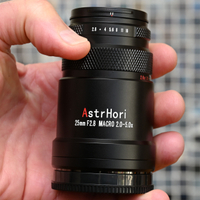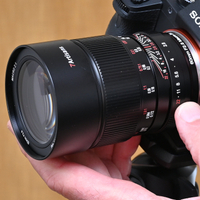Digital Camera World Verdict
I like the focal length of the AstrHori 120mm F2.8 Macro 2x, which enables a relatively generous working distance for oversized 2.0x macro shooting. It’s a fully manual affair with no autofocus or communication with the host camera body, but I’m not overly fussed about that for macro photography. Image quality and handling are mostly good and the lens has a solid all-metal construction, making it decent value at the price.
Pros
- +
2.0x / 2:1 maximum magnification
- +
Quality metal construction
- +
Generous macro working distance
Cons
- -
Disappointing mid-aperture sharpness
- -
No autofocus, nor any electronics
- -
Tricky medium-distance focusing
Why you can trust Digital Camera World
AstrHori has made a name for itself as a Chinese manufacturer of budget-friendly lenses and a few accessories including mount adapters, filters and macro focusing rails. Some of the company’s lenses are pretty extreme, like the AstrHori 25mm F2.8 Macro 2.0x-5.0x and AstrHori 18mm F8 2x Periscope Probe Macro, both of which go beyond the usual 1.0x magnification of typical macro lenses. Indeed, nearly all autofocus macro lenses top out 1.0x maximum magnification, although the Canon RF 100mm F2.8L Macro IS USM is a notable exception, stretching to 1.4x magnification. Like the other two AstrHori lenses I’ve just mentioned, the 120mm F2.8 Macro 2x is a fully manual lens. You therefore get no autofocus and there are no built-in electronics for enabling aperture control from the host camera body. It therefore offers a very hands-on shooting experience but, for macro photography, that’s no bad thing and the lens aims to take on some of the best macro lenses on the market, but at a cutdown price.
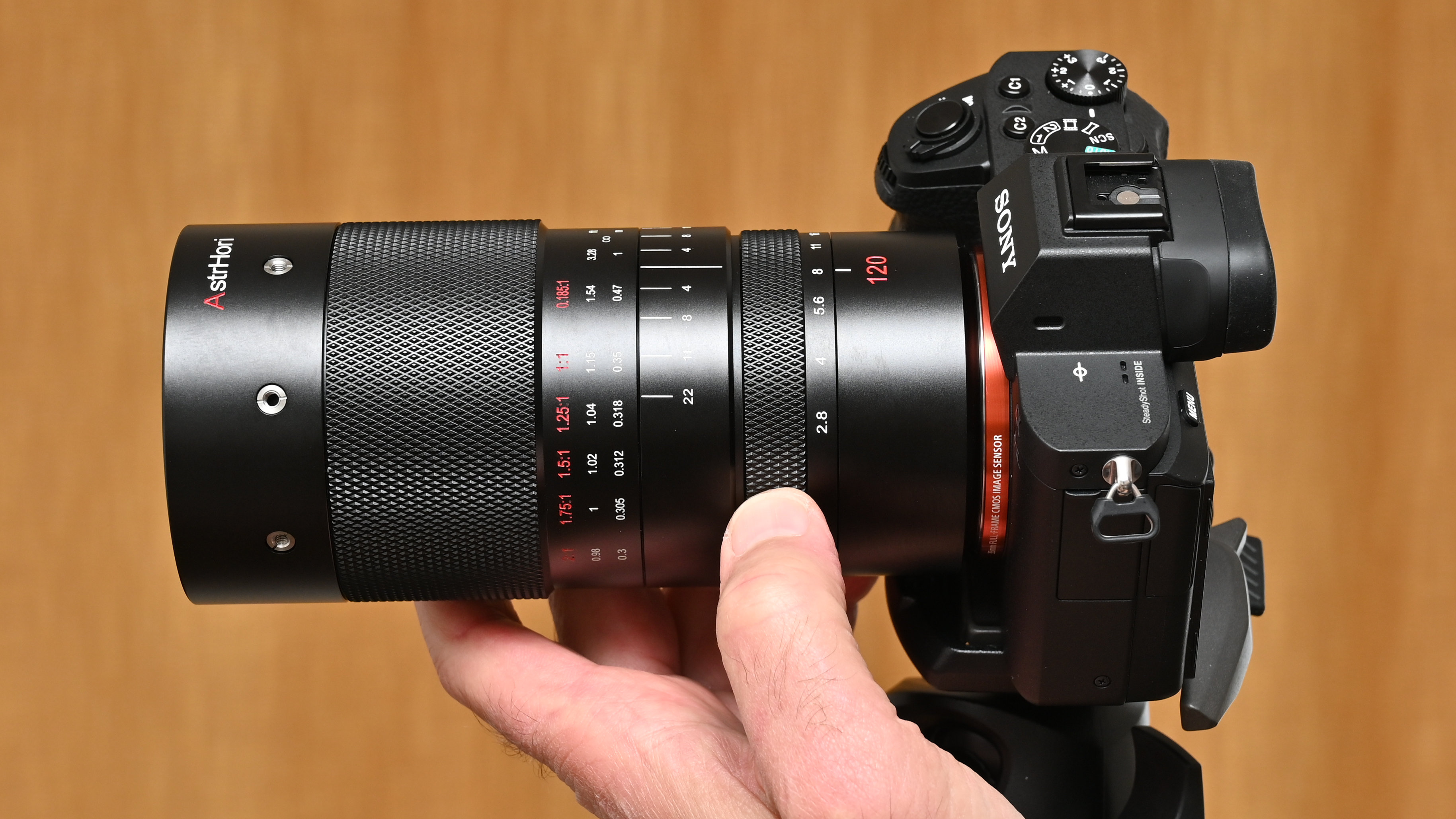
AstrHori 120mm F2.8 Macro 2x: Specifications
| Mount options | Canon EF & RF, L-mount, Nikon Z, Sony E (FE) |
| Lens construction | 14 elements in 9 groups |
| Angle of view | 20.6 degrees |
| Diaphragm blades | 13 |
| Minimum aperture | f/22 |
| Minimum focus distance | 0.3m |
| Maximum magnification | 2.0x |
| Filter size | 72mm |
| Dimensions | 77x165mm |
| Weight | 930g |
AstrHori 120mm F2.8 Macro 2x: Price
Launched in the summer of 2024, the full-frame compatible AstrHori 120mm F2.8 Macro 2x is available in a wide range of mount options, including Canon EF & RF, L-mount, Nikon Z and Sony E (FE). Naturally, creating a variety of mount options is a lot easier when you’re making a ‘dumb lens’ with no autofocus nor built-in electronics. It never hurts to spread the net with a few options. The lens sells for around $369/£369. Again, the fully manual nature of the lens helps to keep the price down, and it’s very much less expensive than most autofocus macro lenses.
AstrHori 120mm F2.8 Macro 2x: Design & Handling
Most dedicated macro prime lenses have a focal length of around 90mm to 105mm, so the AstrHori 120mm F2.8 Macro 2x is longer than most. It’s physically quite long as well, measuring 77x165mm and weighing in at a hefty 930g, but the physical length of the lens doesn’t extend as you focus down from infinity to the shortest object distance of 30cm, or about a foot. The net result is that you get a comfortable working distance between the front of the lens and the subject you’re shooting, equating to about 12cm / 4.7” for full 2x macro shots.

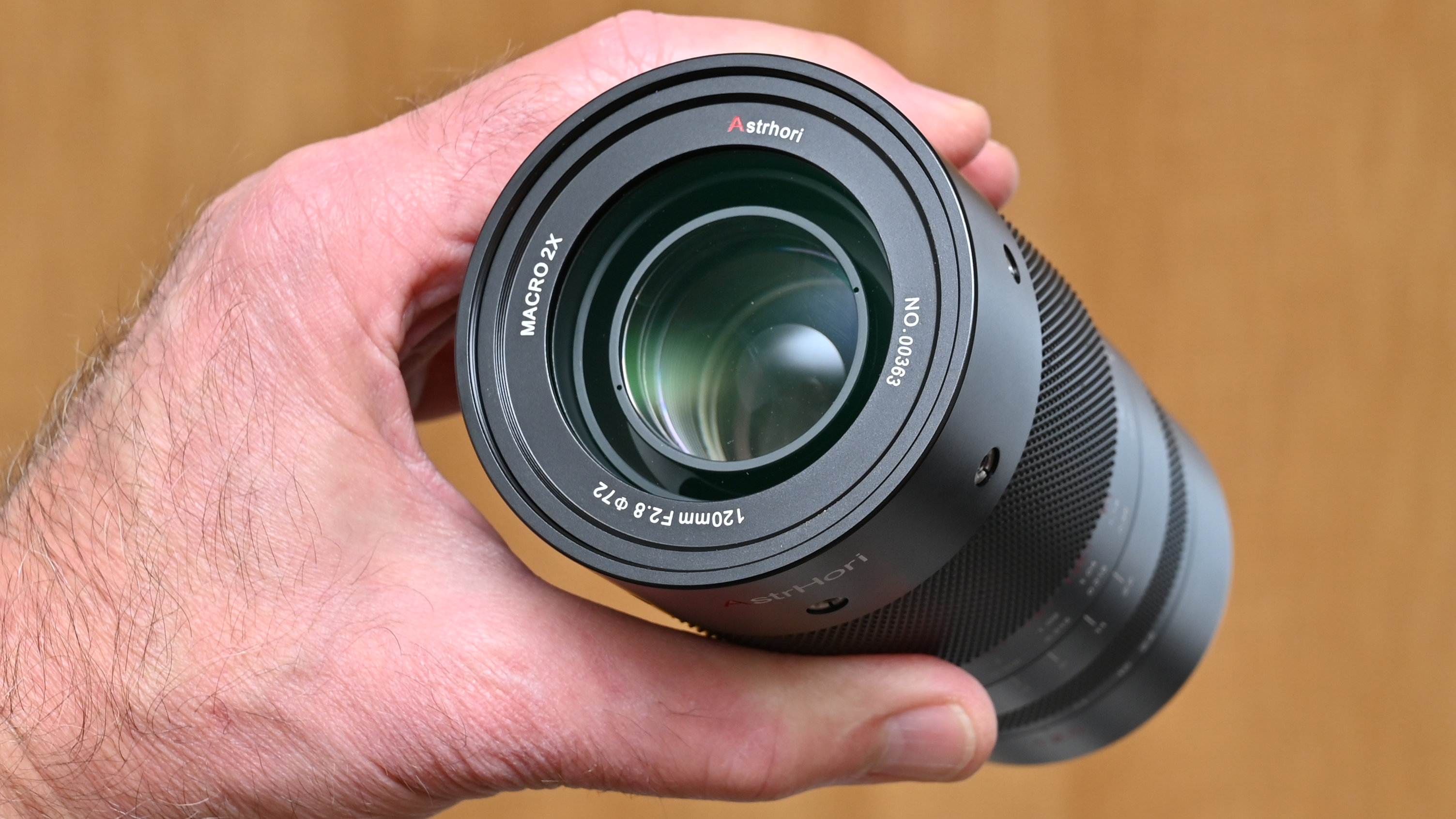
Although the physical length of the lens remains the same at all focus distances, most of the internal groups of elements kick off near the back and move towards the front as you decrease the focus distance. The effect is more exaggerated than I’ve seen in many ‘internal focus’ macro lenses. The optical path itself comprises 14 elements in 9 groups, and includes four LD (Low Dispersion) elements and three HRI (High Refractive Index) elements, the combination intending to boost clarity and minimize chromatic aberrations.
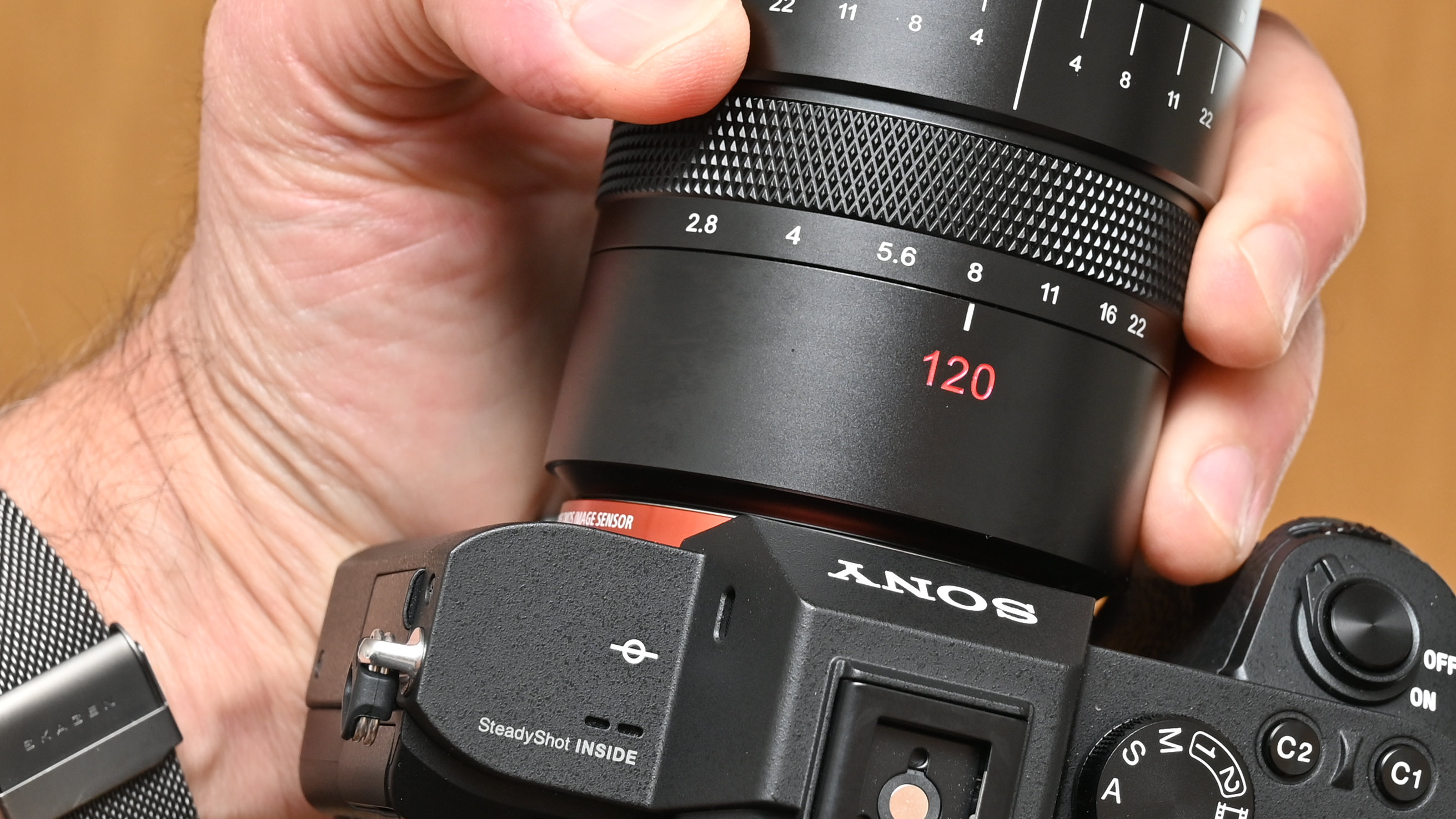
To keep your left hand busy, there are two control rings, the rearward one being the aperture ring. This operates in full f/stop steps, with no de-click option. However, the click steps are spaced quite far apart and the aperture is continuously variable, so you can choose interim values if you feel the need. Naturally, with no electronics, the aperture value can’t be communicated to the camera body, nor stored in the EXIF data of image files. The aperture diaphragm itself is particularly well-rounded, based on 13 curved blades.
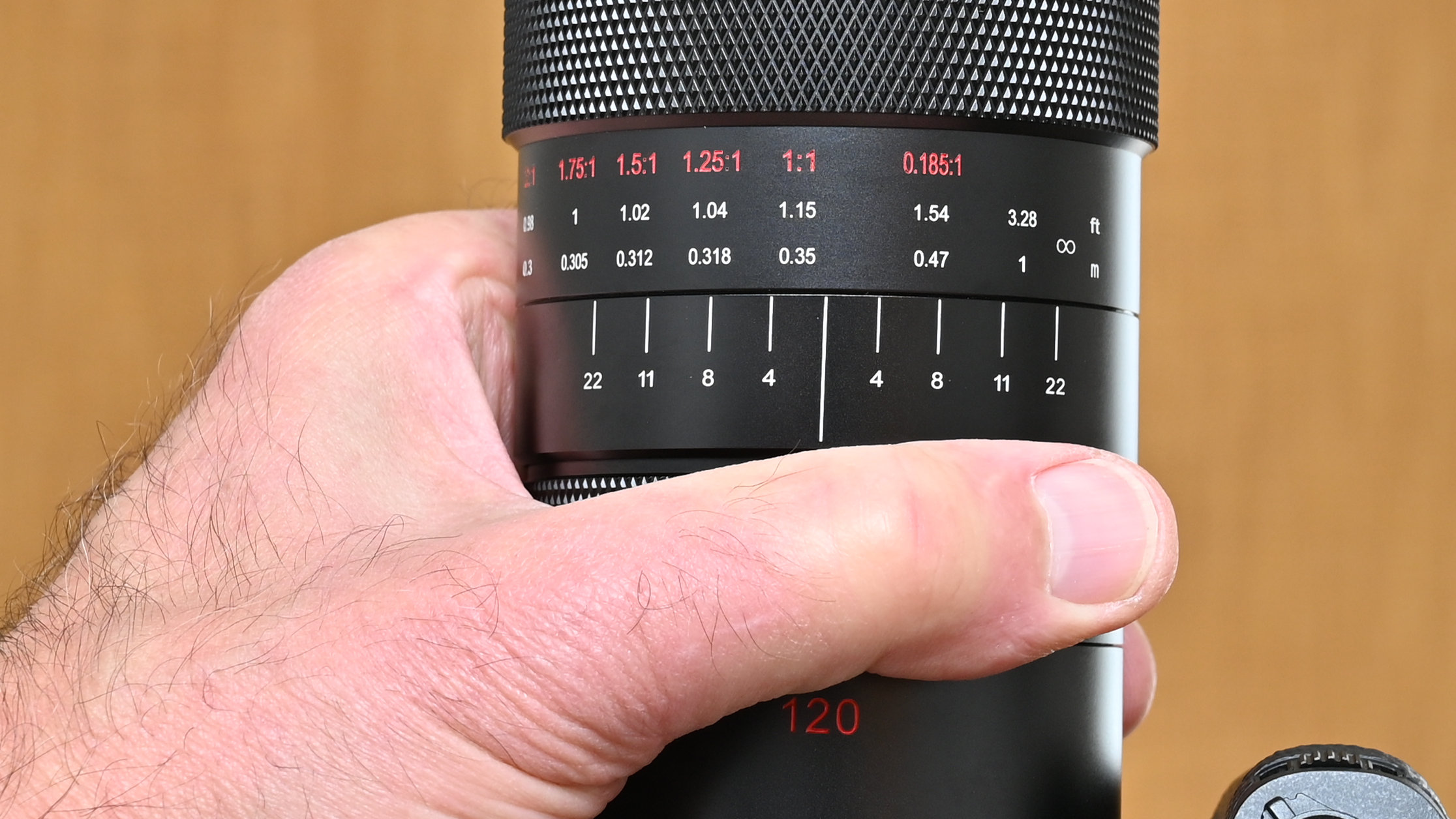
Just to the rear of the focus ring is a rank of depth of field markers for apertures of f/4, 8, 11 and 22. They can come in useful for general shooting but are of little benefit for macro photography, where pinpoint accuracy for focusing is the order of the day.

Up next is the focus control ring itself, which has markings for focus distance in feet and meters, as well as for magnification factor. It’s neat for providing a ready reference, for example showing that 1.0x macro magnification is attained at a focus distances of 0.35m / 1.15ft and that full 2.0x magnification is at 0.3m / 0.98ft. The focus ring works fairly smoothly and with good tactile feedback but the sliding mechanism for the internal groups of elements was clearly audible in my review sample. A bigger problem is that while the overall rotation of the focus ring is reasonably generous at 120 degrees, only a very small portion of this is given to longer focus distances of between 0.5m and infinity. The upshot is that manual focusing for macro shooting is reasonably easy but it can be difficult to adjust focus accurately for medium to long range shooting.
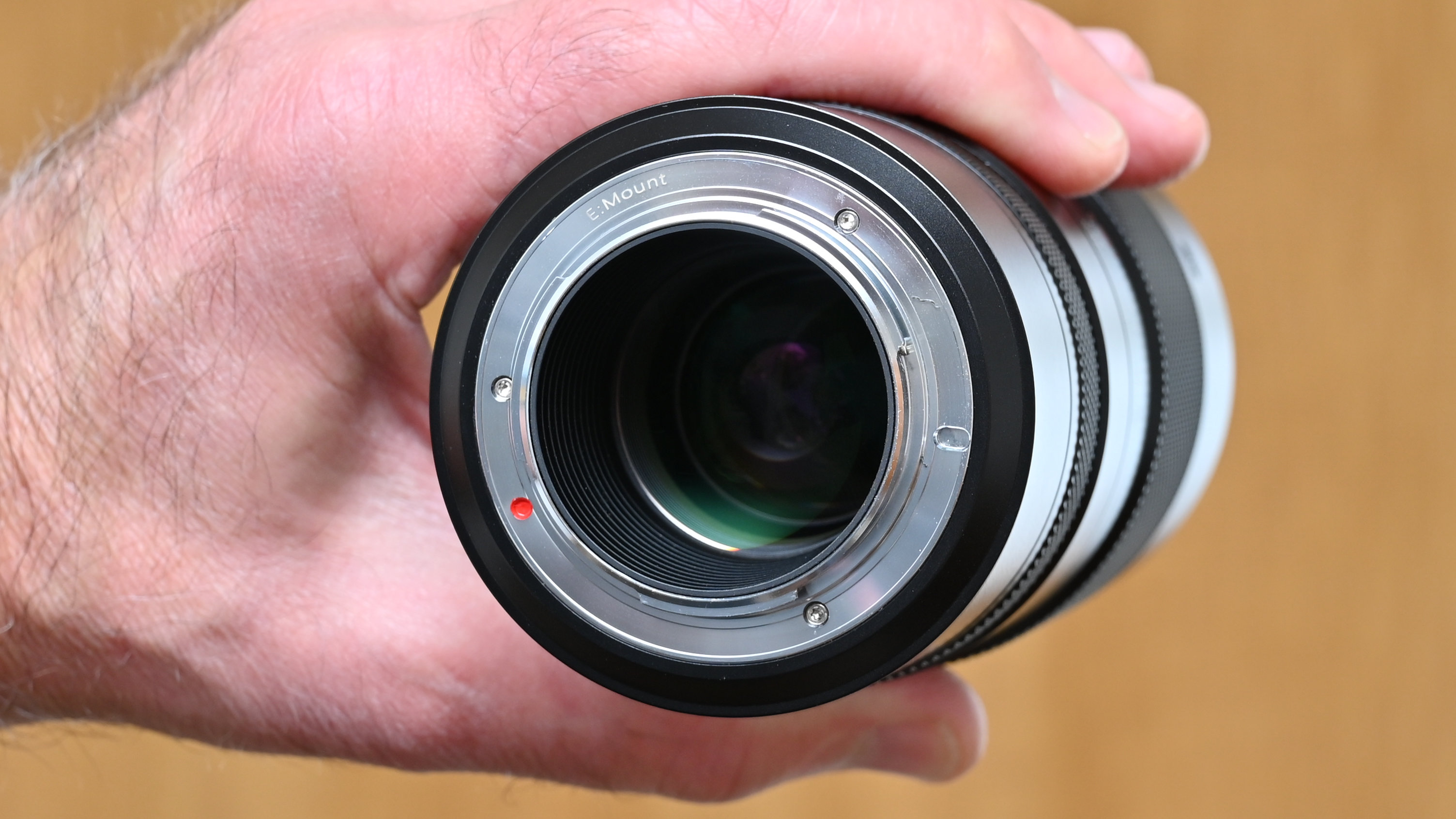
The lens has a 72mm filter attachment thread and is supplied with a regular clip-on front cap, but no hood is supplied with the lens. What it does feature is six screw holes around the front of the barrel, which you can use for attaching macro lights for effectively illuminating close-up subjects.
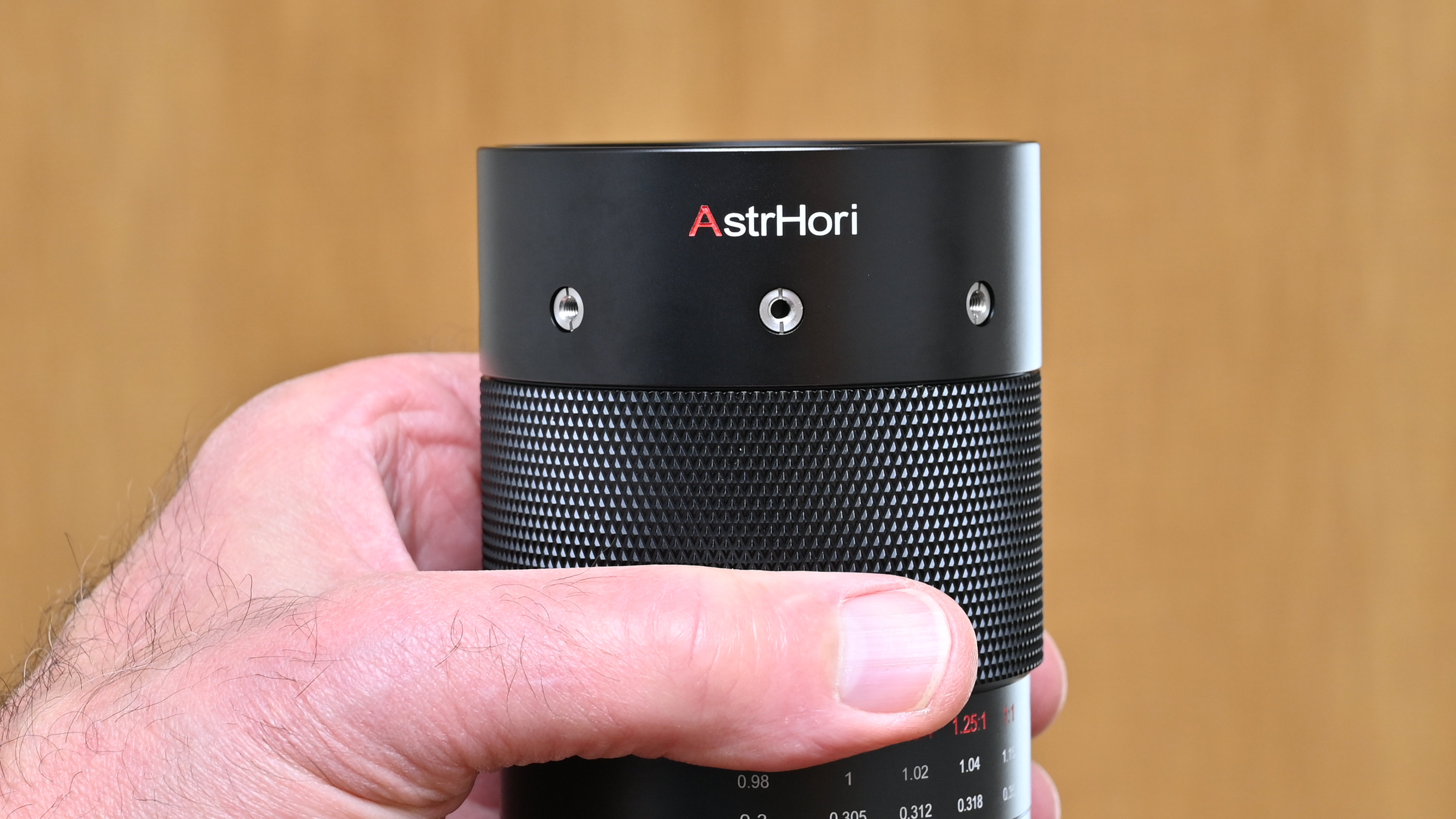
AstrHori 120mm F2.8 Macro 2x: Performance
I often find that autofocus macro lenses are more than just one-trick ponies. They can also work very well for portraiture and for any other scenario in which I need a short telephoto lens with a reasonably fast aperture rating. The difficulty in focusing for anything other than extreme close-ups makes the AstrHori 120mm F2.8 Macro 2x perform much more like a specialist macro lens, suited to just one purpose. Maybe that’s the reason it’s not supplied with a hood.
Image quality between 1.0x and 2.0x has a lot to do with your focusing accuracy and macro shooting technique, rather than just being about the quality of the lens. Testing it on a Sony A7 II, I found that the focus peaking aid was of little use for macro shots, where the degree of precision required is too great. I had more success with the magnified preview option, which is available by default or via custom settings in the Live View mode of most cameras.
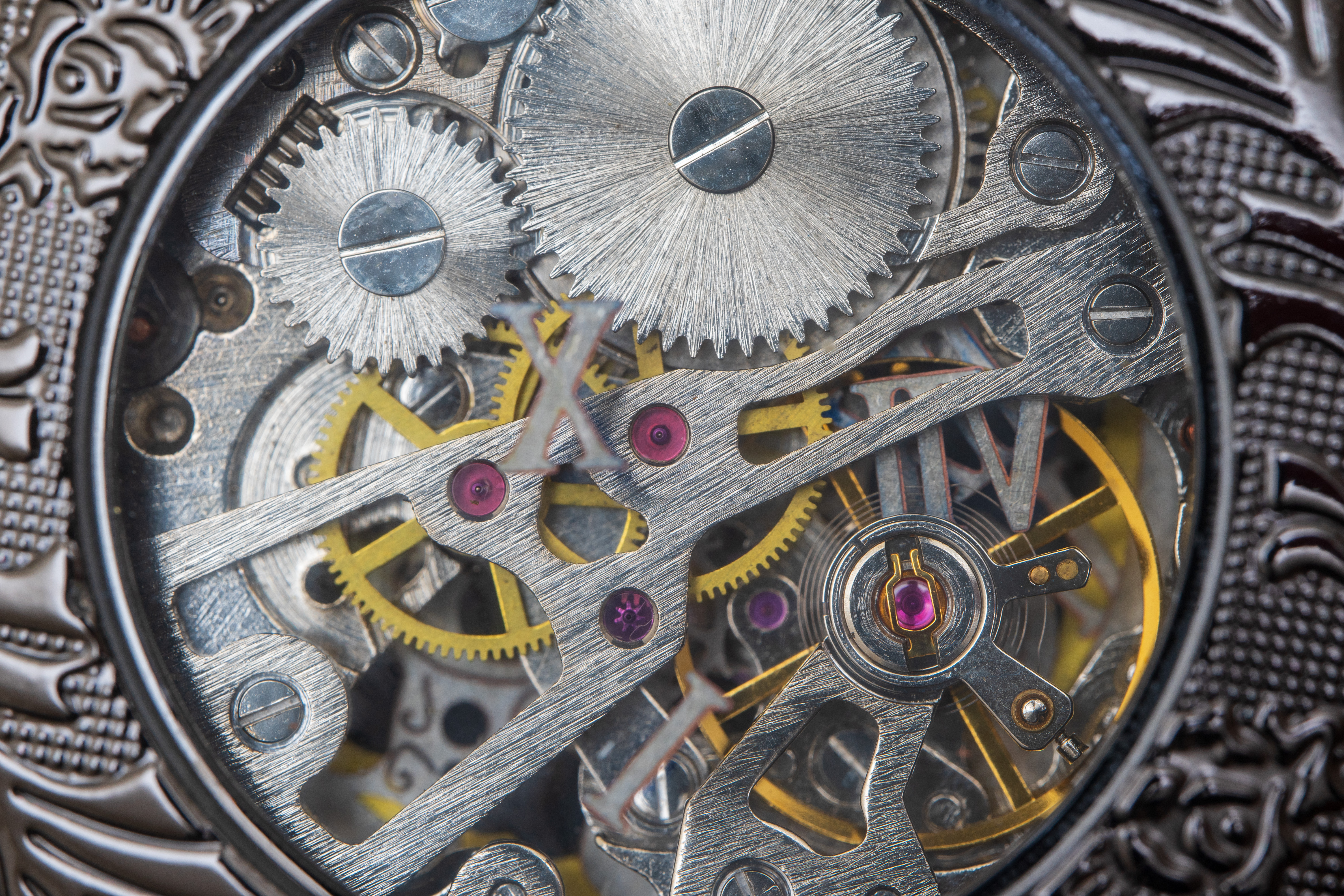
You can generally get IBIS (In-Body Image Stabilization) to work for this and other ‘dumb lenses’ by dialing their focal length and sometimes their aperture into the camera. Either way, image stabilization can be of very limited effectiveness at 1.0x macro magnification, even less so at 2.0x. I got the best hit rate by using the time-honored combination of a tripod and remote controller, while the very short duration of the pulse of light from a flashgun or studio flash head can help effectively freeze any motion. For medium to long-distance shooting, I found the sharpness of this lens to be merely adequate at most apertures, and disappointing at f/4 and f/5.6. That’s borne out by out lab-test results but, for really close-range shooting, sharpness seemed rather better.
AstrHori 120mm F2.8 Macro 2x: Sample Images
The sample images in the following gallery are macro shots taken at or near the minimum focus distance, using bounced flash as a light source. The subject matter includes the face of a wristwatch, the inner workings of a fob watch, colored pencils, the shutter speed control dial of a Nikon Z fc camera, a garden flower (Japanese Anemone), standard sized text from an inkjet printer on plain paper and models of a motorcycle and medieval knight on horseback.
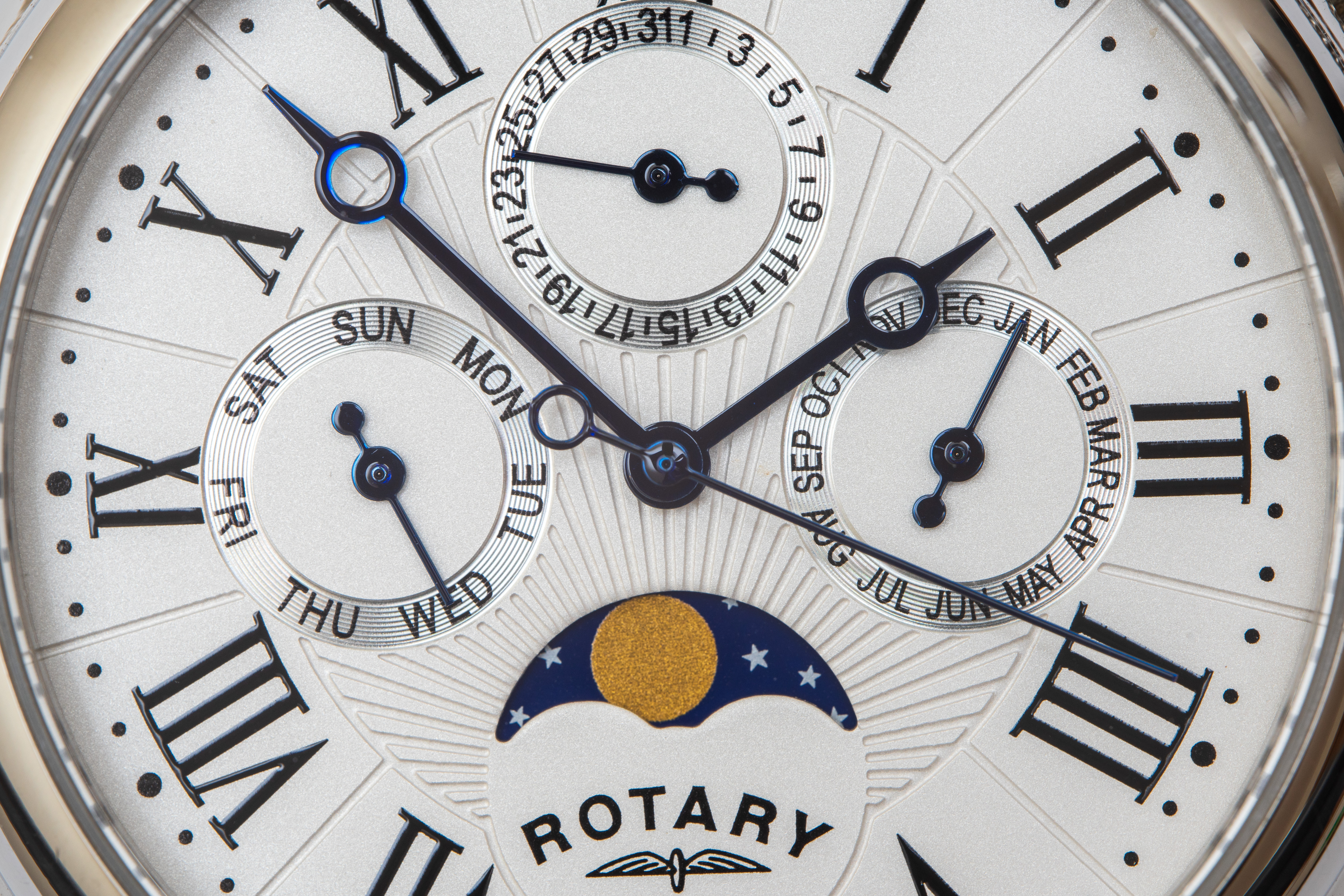


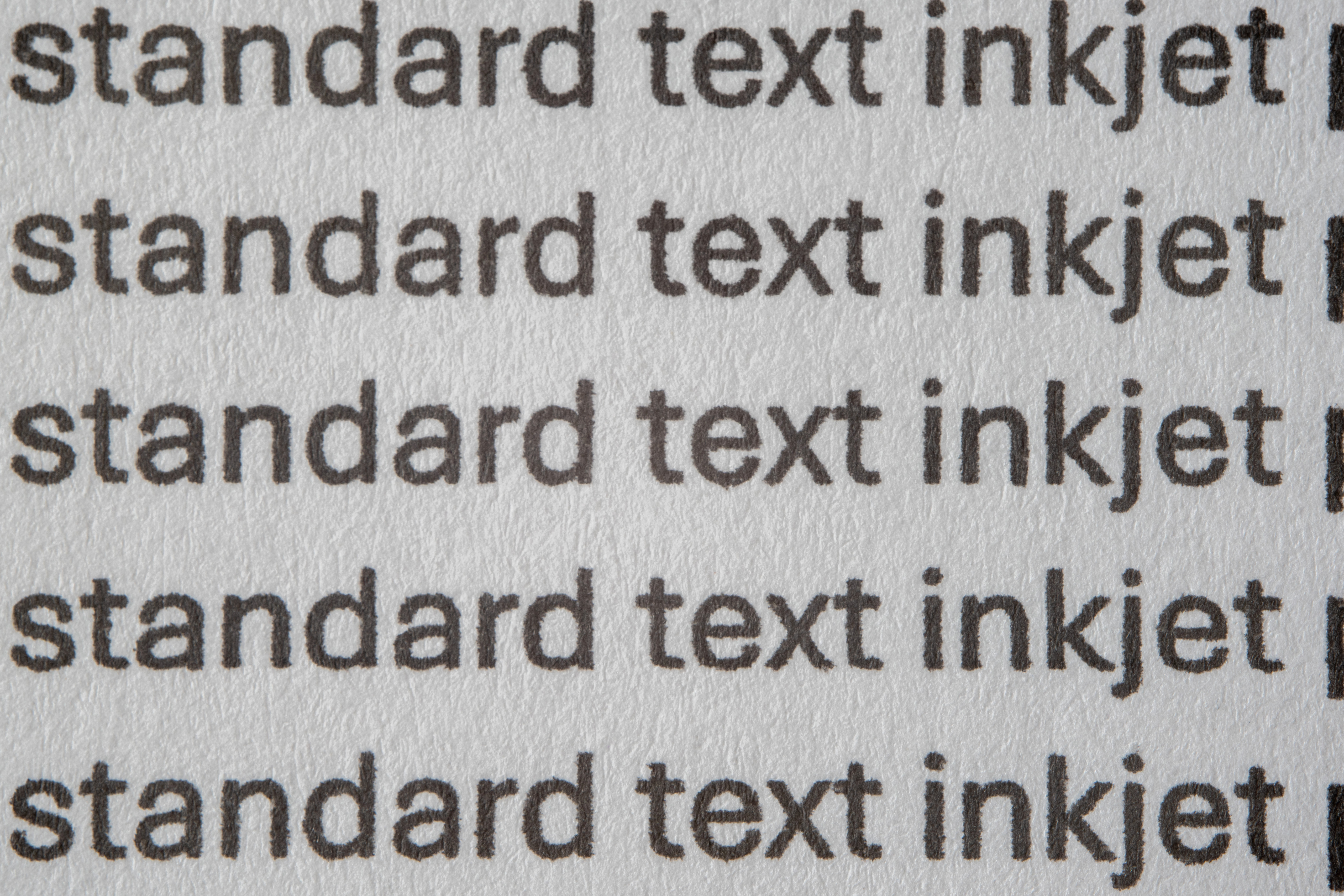
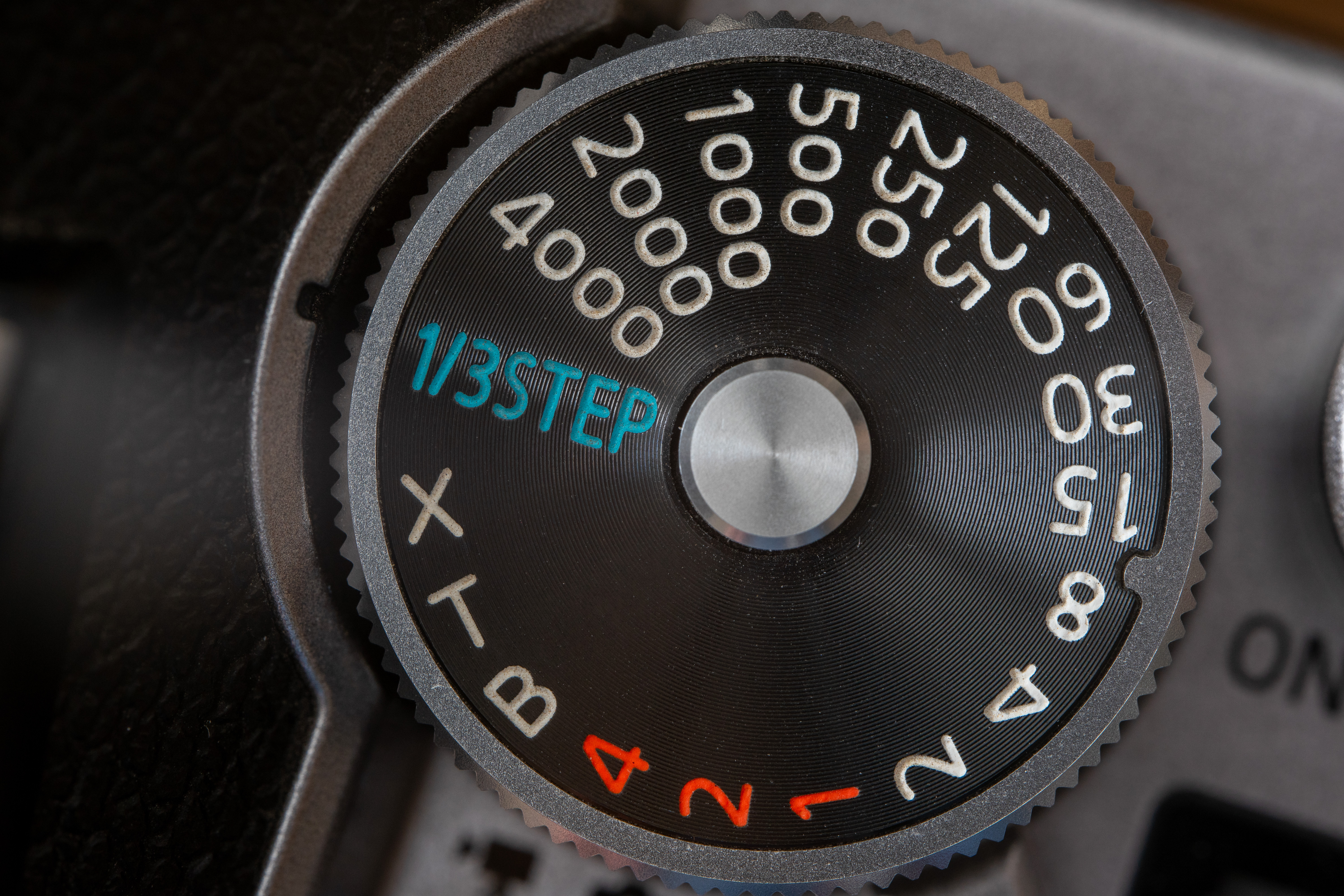

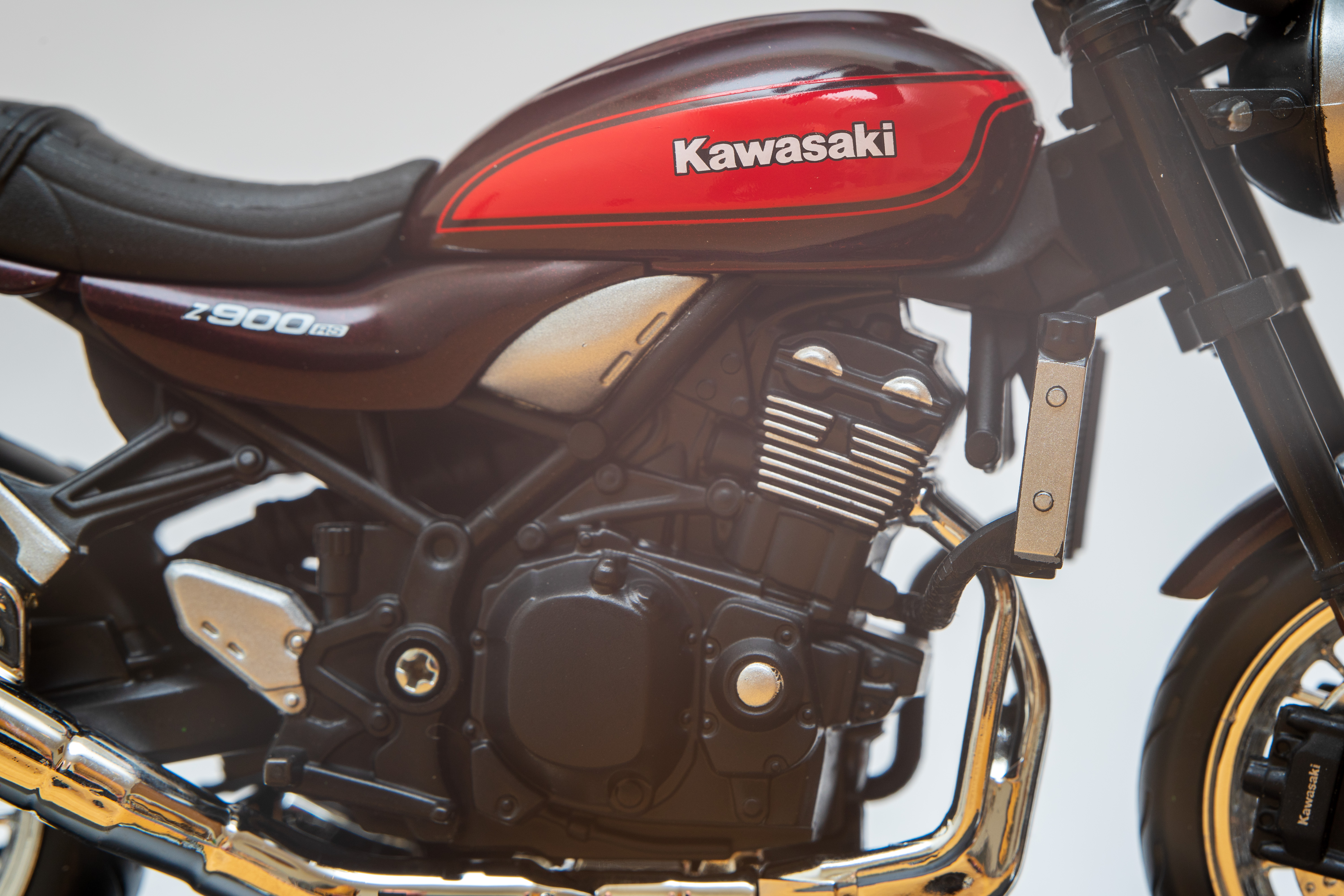

AstrHori 120mm F2.8 Macro 2x: Lab Results
We run a range of lab tests under controlled conditions, using the Imatest Master testing suite. Photos of test charts are taken across the range of apertures and zooms (where available), then analyzed for sharpness, distortion and chromatic aberrations.
We use Imatest SFR (spatial frequency response) charts and analysis software to plot lens resolution at the center of the image frame, corners and mid-point distances, across the range of aperture settings and, with zoom lenses, at four different focal lengths. The tests also measure distortion and color fringing (chromatic aberration).
Sharpness:
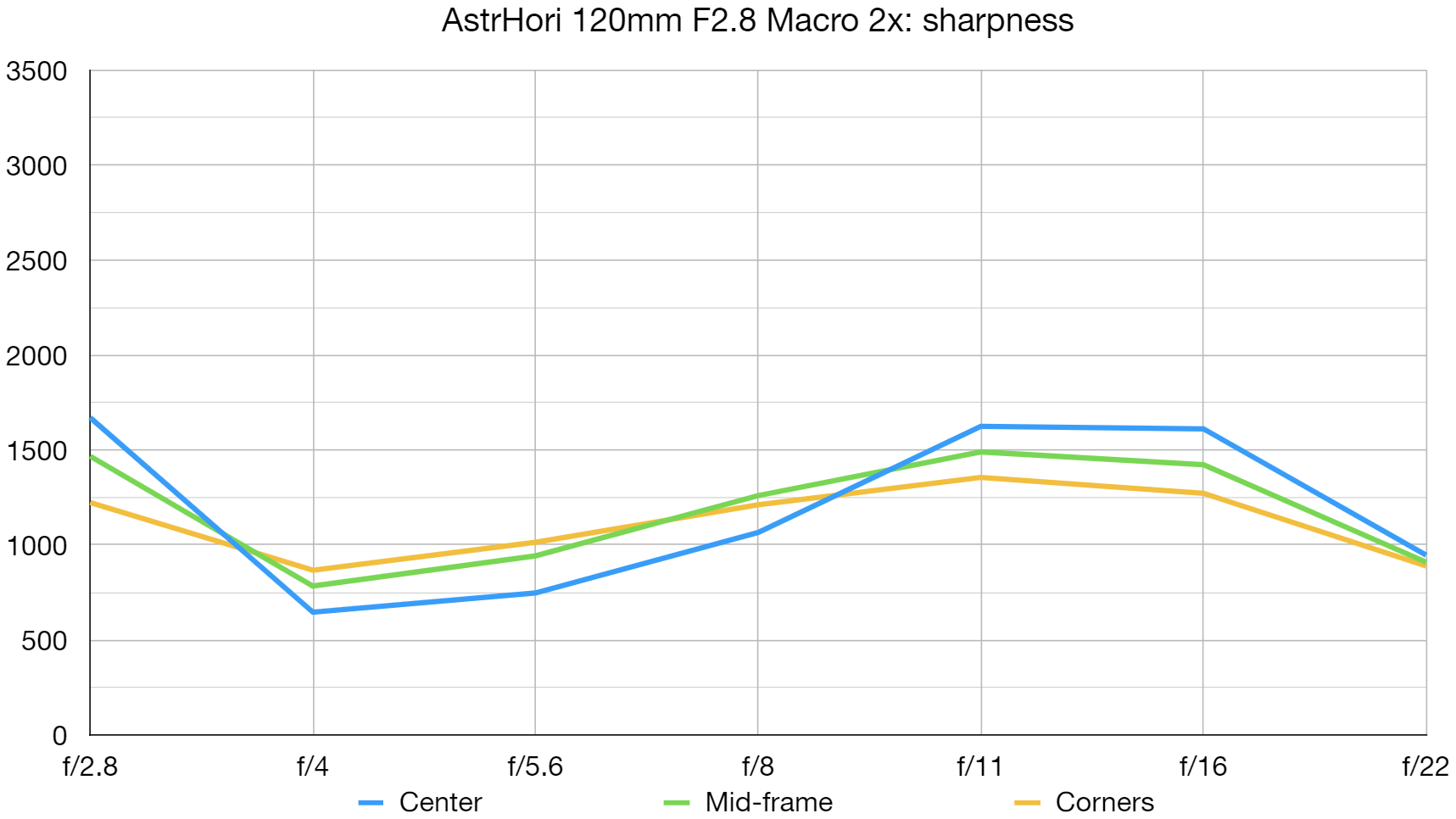
At the regular object distances required for shooting test charts, our lab results reveal mediocre sharpness at most aperture settings, and poor performance at f/4 and f/5.6. In real-world shooting at really close focus distances for macro photography, I found sharpness to be rather better.
Fringing:

The lens does well to keep color fringing to a minimum, right across the image frame and throughout the aperture range.
Distortion: 0.92
There’s a little pincushion distortion which can’t be taken care of by automatic in-camera correction, due to the lack of electronic communication, but it’s generally not enough to be noticeable.
AstrHori 120mm F2.8 Macro 2x: Verdict
I like that the AstrHori 120mm F2.8 Macro 2x gives such immense 2x magnification and can genuinely reveal tiny levels of detail that are invisible to the naked eye. Care and patience are required to get the best results, particularly in relation to accurate focusing, but that can pay off in terms of very pleasing image quality. I feel that the lens is rather less useful as a short telephoto prime for general shooting but that’s only to be expected from what is a somewhat specialist macro lens, and at a very reasonable price.
| Features | The suped-up 2x macro facility is great but it’s a fully manual lens. | ★★★★ |
| Design | The design works much better for extreme macro close-ups than for general shooting. | ★★★★ |
| Performance | In common with the design, performance is better for macro close-ups than general photography. | ★★★★ |
| Value | Considering the build quality, features and macro performance, it’s good value for money. | ★★★★ |
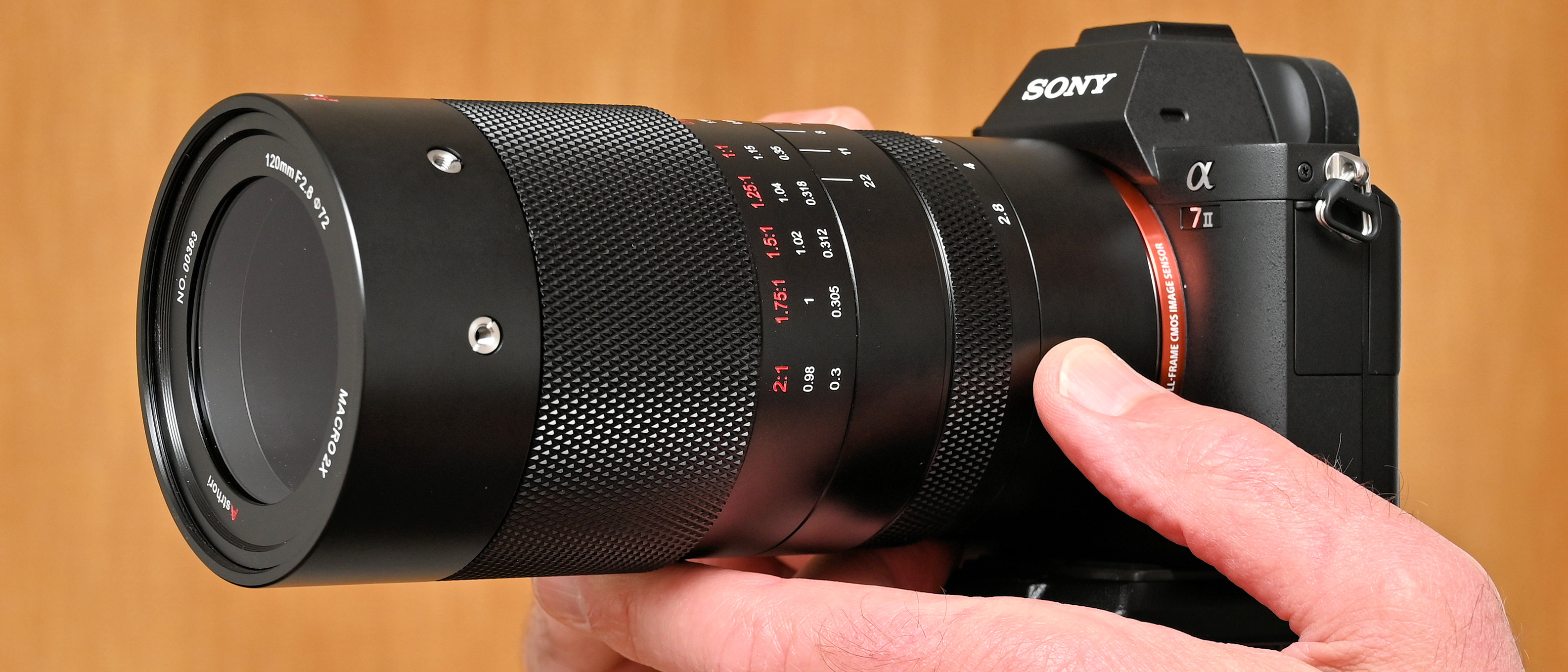
Should you buy the AstrHori 120mm F2.8 Macro 2x?
✅ Buy this...
- You want to go extra large on your macro magnification, to double that you can achieve with most macro lenses.
- You like the generous working distance between the front of the lens and the subject, enabled by the lens’s 120mm focal length.
🚫 Don't buy this...
- You’re not a fan of manual focusing and would rather have a more regular, autofocus macro lens.
- You want a macro lens that also works well for portraiture and general photography, for which this one’s not ideal.
Alternatives
The AstrHori 25mm F2.8 Macro 2.0x-5.0x is even more of a specialist macro lens that gives anything from 2x to 5x magnification but can only be used at short focus distances. That one costs around $399/£409.
Matthew Richards is a photographer and journalist who has spent years using and reviewing all manner of photo gear. He is Digital Camera World's principal lens reviewer – and has tested more primes and zooms than most people have had hot dinners!
His expertise with equipment doesn’t end there, though. He is also an encyclopedia when it comes to all manner of cameras, camera holsters and bags, flashguns, tripods and heads, printers, papers and inks, and just about anything imaging-related.
In an earlier life he was a broadcast engineer at the BBC, as well as a former editor of PC Guide.
